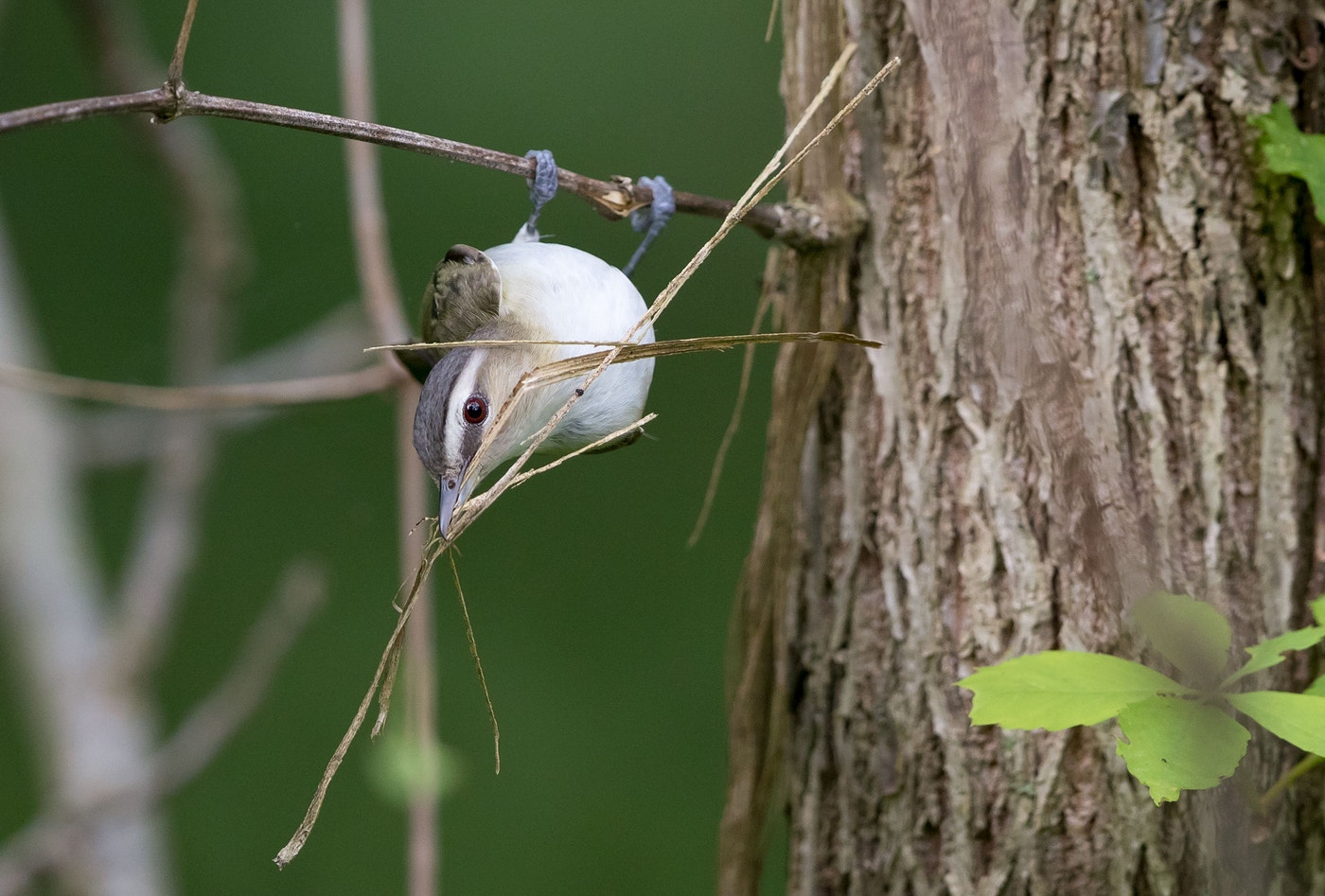
What comes to mind when you think of a bird’s nest? Twigs, probably dry leaves, maybe some cattail fluff—perhaps even cigarette butts. Industrious creatures, birds construct their nests from just about any material they can get their claws on. From koala fur to shreds of plastic, if birds can make a nest from it, they will.
For birders, these indiscriminate construction practices provide a fun opportunity to take part in the nesting process by providing raw materials for birds to collect and use. Problem is, many of the items birds find on their own or that are provided by people pose risks to them and their chicks. What's more, which items are potentially dangerous isn't always obvious.
Take it from Jennifer Gordon, executive director of Carolina Waterfowl Rescue, a center in North Carolina that cares for everything from donkeys to injured songbirds. Gordon says her team treats dozens of adult birds and chicks every year due to hazardous nesting materials. Based on her experience, Gordon advises staying clear of anything synthetic and providing only natural materials. But be careful, she says, because even some natural elements aren’t always safe for bird nests. Pet fur, for example, could be dangerous if treated with flea medicine.
John Rowden, ´ˇłÜ»ĺłÜ˛ú´Ç˛Ô’s director of community conservation, agrees, also emphasizing the importance of sticking to organic options free of potentially dangerous chemical components. “Natural materials avoid those sorts of pitfalls and will be better for birds to use since they’ve evolved with them,” he says.
To successfully help your birds with their nest building—and save them valuable energy for breeding—here are some recommendations for providing bird-friendly nesting materials from Rowden and Gordon.
Safe Materials
Twigs or small sticks: Natural materials that birds could find on their own are good baselines for nesting components. You can collect twigs or small sticks to pile or loosely bundle together in your yard, allowing birds easy access to materials they would otherwise have to search for.
Leaves and other yard waste: Keep debris and leaf litter around your yard instead of perfectly manicuring your lawn for spring. Although it comes at the price of a less picturesque space, the birds will appreciate it (as will your back).
Small pieces of straw: You can find straw at the nearest Home Depot or any other home improvement store. Pile the straw outside in a spot easy for birds to find. To up the entertainment value, you can also display it in a suet feeder or recycled berry container for the birds to yank out.
Grass clippings: If you trim your grass, consider piling clippings in your lawn instead of throwing them in the trash. However, if you’re going to go this route, be sure you don’t use fertilizers, pesticides, or other chemicals on your grass.
Native plants: An excellent way to make your yard bird-friendly and provide easy access to safe nesting materials is by growing native plants. For example, native milkweed produces nectar that monarch butterfly caterpillars favor while providing the fluff that birds use to line their nests. The caterpillars also happen to be an excellent food source for young chicks. “That's a win-win-win,” Rowden says.
Materials to Avoid
Human hair: According to Gordon, human hair is a triple threat for birds: It’s long, thin, and strong. These characteristics can be a deadly combination, allowing the hair to easily ensnare a bird’s leg or wing and sever it. “You can wrap [hair] around your finger and cut your circulation off,” she says.
Yarn or string: Long strands of yarn and string can wrap around a bird. Hatchlings are particularly susceptible to such entanglements, Gordon says. Yarn in a nest can get caught around a baby bird and cut off circulation as it grows.
Dryer lint: Although it is popular to put out and seems like the perfect lining for a nest, dryer lint quickly loses its fluffiness and structure when wet. Dryer lint is unsustainable in the rain, crumbling and leaving holes in an otherwise solid nest.
For more tips on how to make your home and yard a haven for birds, check out ´ˇłÜ»ĺłÜ˛ú´Ç˛Ô’s Bird-Friendly Communities page.

